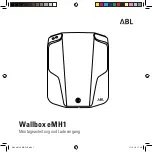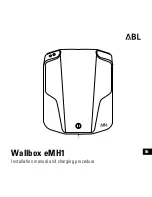
Vehicle model
Replacement
amount with oil fil-
ter
E 200 CGI
60
E 250 CGI
60
5.5 l
E 220 CDI
60
E 250 CDI
60
6.5 l
E 350
61
E 350 CGI
60
E 350 CDI
60
8.0 l
E 500
8.5 l
Lubricant additives
!
Do not mix any lubricant additives with
the engine oil. This could damage the
engine. Damage resulting from the use of
such lubricant additives in the engine oil is
not covered by the Mercedes-Benz implied
warranty.
Engine oil viscosity
Viscosity describes the flow characteristics
of a fluid. If an engine oil has a high viscosity,
this means that it is thick; a low viscosity
means that it is thin.
Select the SAE classification (viscosity) of the
engine oil according to the outside tempera-
ture. The following table shows you the vis-
cosity classes to be used depending on the
average air temperature.
Brake fluid
G
Risk of accident
The brake fluid constantly absorbs moisture
from the air; this lowers its boiling point.
If the boiling point of the brake fluid is too low,
vapour pockets may form in the brake system
when the brakes are applied hard (e.g. when
driving downhill). This would impair braking
efficiency.
You should have the brake fluid renewed at
regular intervals. The brake fluid change inter-
vals can be found in the Service Booklet.
Only use brake fluid approved by Mercedes-
Benz. Information about approved brake flu-
ids can be obtained from any Mercedes-Benz
Service Centre.
i
There is usually a notice in the engine
compartment to remind you when the next
brake fluid change is due.
60
BlueEFFICIENCY
61
Only for certain countries.
316
Service products and capacities
Technical
dat
a
BA 207 ECE ÄJ 2010/1a; 1; 2, en-GB
mkalafa
Version: 3.0.2.11
2010-01-26T13:03:22+01:00 - Seite 316
Summary of Contents for E-Class 2010
Page 2: ......
Page 3: ......
Page 5: ...BA 207 ECE ÄJ 2010 1a 1 2 en GB mkalafa Version 3 0 2 11 2010 01 26T13 03 22 01 00 Seite 2 ...
Page 332: ......
Page 333: ......















































